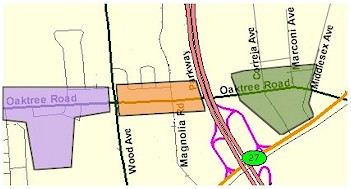
Bridgewater, NJ Hindu temple
Ilankai Tamil Sangam
Association of Tamils of Sri Lanka in the USA
Published by Sangam.org
by Richard Cowen & James Yoo, North Jersey.com, October 17, 2007
|
Indians, Mexicans, Filipinos, Dominicans and Chinese are the largest immigrant groups -- but only Indians account for at least 10 percent of the ethnic population. |
Report: New Jersey Immigrant Kids Count 2007
Many N.J. kids embrace 2 worlds
New Jersey's next generation is a vibrant microcosm of the world.
A study of census data shows that nearly one in three New Jersey
children comes from an immigrant family -- and is part of more than 100
nationalities that call the Garden State their home.
Indians, Mexicans, Filipinos, Dominicans and Chinese are the largest
immigrant groups -- but only Indians account for at least 10 percent of
the ethnic population.
 |
Bridgewater, NJ Hindu temple |
"We have an amazingly diverse population that cuts across socio-economic
lines," said Cecilia Zalkind, executive director of the Association for
Children of New Jersey, which did the study. But amid that diversity,
growing pains continue for many, Zalkind added: "Some immigrant families
are doing very well, others are struggling. Children reflect what the
state is going to look like in the future."
Most striking is that 87 percent of the roughly 646,000 children of
immigrant families were born in the United States, so they have the
benefit of citizenship. The national average is 84 percent.
However, many parents of those children arrived here undocumented and
now find themselves trapped in the low-wage underground. The study shows
that 48 percent of the working members of immigrant families in New
Jersey earn less than $25,000 a year, and that 17 percent of their
children have no health insurance, compared with 8 percent of children
born to native U.S. families. Immigrant children also are likely to live
in more crowded conditions.
 |
| Oaktree Road, Edison, NJ - main Indian shopping area in NJ |
Jose Reyes, 18, a senior at Passaic High School, arrived with his
mother, father and brother from Mexico in 2003. His father and brother
have since returned, leaving him to help his mother, a factory worker,
make ends meet. Reyes likes math and wants to attend college to study
engineering but says there is no money and his future is uncertain. "My
mother wants me to work, but around here there is just the factory or
Burger King," he said.
At the other end of the spectrum, the study finds that 14 percent of the
working members of immigrant families earned $75,000 or more in 2005 --
affording their children dreams of a better tomorrow.
Janice Yi, 18, of Closter said she's working hard to make her parents
proud as a freshman at Pratt Institute in Brooklyn. "Because I'm
starting all over, this is a chance to prove myself," she said. Yi plans
to find a job and "do my own thing and prove that what I've been working
for has been all worth it. Everything I do I'm working towards it."
The study suggests that while language may be an obstacle to learning,
it isn't nearly as much a problem for children as for their parents.
Only 4 percent of public school students had serious problems speaking
English. But 20 percent of immigrant children came from a home where
neither parent spoke English very well.
Robert Holster, superintendent and 32-year veteran of schools in
Passaic, long a melting pot, recalls when the immigrants used to be
Polish, Russian and Ukrainian. Now they're mostly Mexican, Dominican and
Peruvian. Either way, urban districts with their high concentrations of
immigrants are the ones spending the most time and money teaching
language skills.
"That's one of the reasons why the dollar spent in the urban school
district doesn't go as far as the dollar spent in the suburban
district," Holster said.
Different cultures have different attitudes toward education. Asian
parents tend to be more self-sacrificing and demanding of their
children's academic performance. Latino parents are often afraid to
confront school authorities or get involved, Holster said.
In Asian homes, both parents often work long hours to support the
family, leaving the children at home with orders to study. They push
their children to learn at least three languages to prepare for the
future. But the long hours spent working take their toll on family life.
"They [the parents] are afraid they are going to lose the identity of
their children culturally and emotionally," said Jason Kim, a Palisades
Park councilman who is Korean. "They'd rather spend money on education
than anything else." Korea is not among the top five countries of origin in New Jersey, but
the state has the nation's third-largest Korean population, estimated at
65,000 to 100,000. More than half lives in Bergen County.
Zalkind said the study comes at a time when Governor Corzine has asked a
panel to examine all facets of the immigration issue. "This is just a
tiny first step in putting the data out there," she said. "It probably
raises more questions than it answers. And although the governor's task
force is not specifically aimed at the needs of children, I would hope
that those needs would be addressed."
Staff Writer Patrick Tuohey contributed to this article.
© 1996-2025 Ilankai Tamil Sangam, USA, Inc.